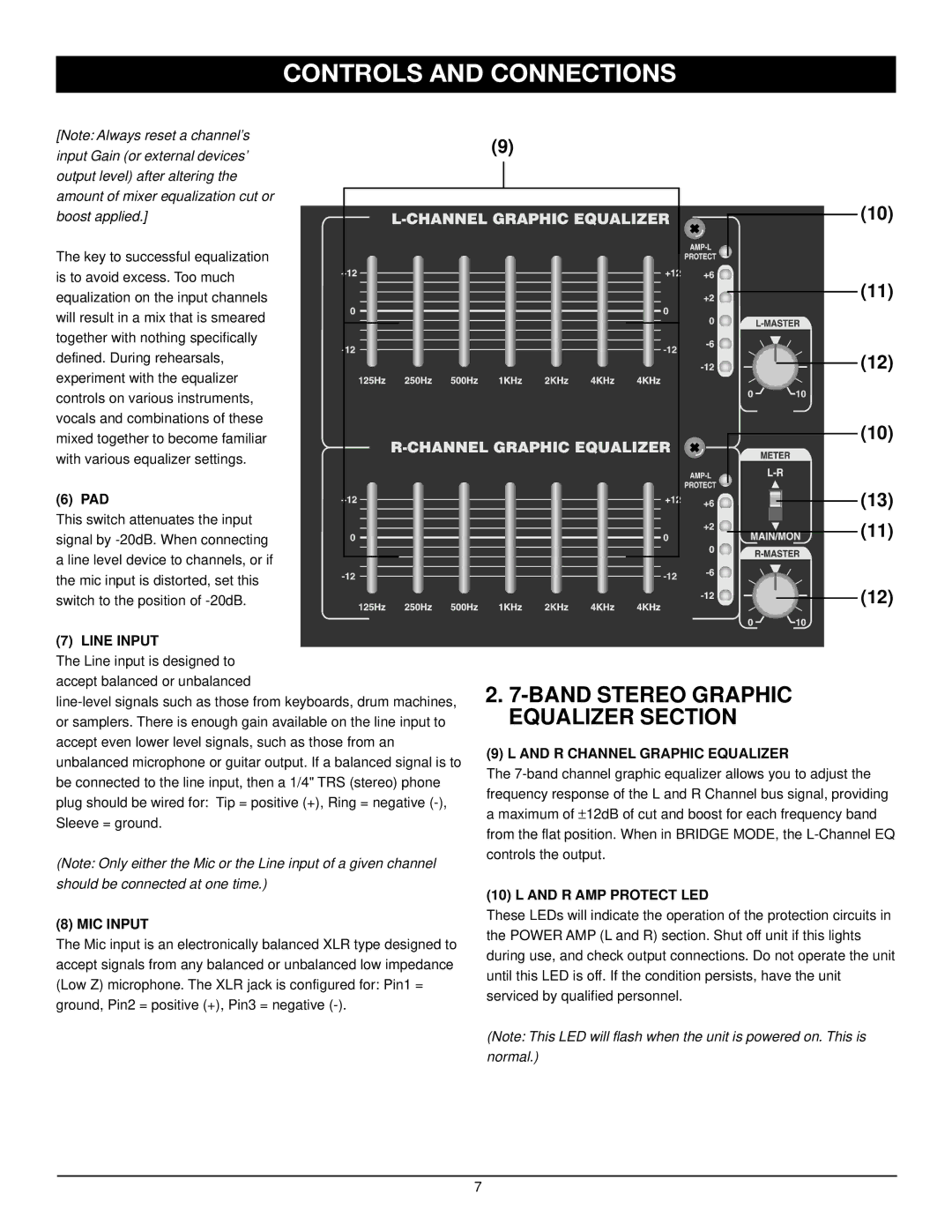
CONTROLS AND CONNECTIONS
[Note: Always reset a channel’s input Gain (or external devices’ output level) after altering the amount of mixer equalization cut or boost applied.]
The key to successful equalization is to avoid excess. Too much equalization on the input channels will result in a mix that is smeared together with nothing specifically defined. During rehearsals, experiment with the equalizer controls on various instruments, vocals and combinations of these mixed together to become familiar with various equalizer settings.
(6) PAD
This switch attenuates the input signal by
(7) LINE INPUT
(9) |
(10) |
(11) |
(12) |
(10) |
(13) |
(11) |
(12) |
The Line input is designed to accept balanced or unbalanced
(Note: Only either the Mic or the Line input of a given channel should be connected at one time.)
2.7-BAND STEREO GRAPHIC EQUALIZER SECTION
(9)L AND R CHANNEL GRAPHIC EQUALIZER
The
(10) L AND R AMP PROTECT LED
(8) MIC INPUT
The Mic input is an electronically balanced XLR type designed to accept signals from any balanced or unbalanced low impedance (Low Z) microphone. The XLR jack is configured for: Pin1 = ground, Pin2 = positive (+), Pin3 = negative
These LEDs will indicate the operation of the protection circuits in the POWER AMP (L and R) section. Shut off unit if this lights during use, and check output connections. Do not operate the unit until this LED is off. If the condition persists, have the unit serviced by qualified personnel.
(Note: This LED will flash when the unit is powered on. This is normal.)
7
